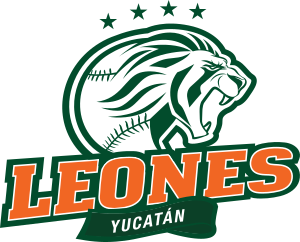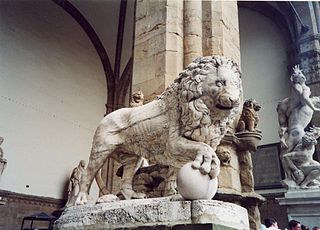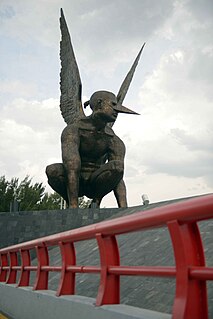
Minatitlán is a city in southeastern Mexican state of Veracruz in the Olmec region of the state and the north of the Isthmus of Tehuantepec.

Puente de Ixtla is a city in the Mexican state of Morelos. It stands at 18°37′01″N99°19′23″W. The city serves as the municipal seat for the surrounding municipality of the same name. The municipality reported 66,435 inhabitants in the year 2015 census.

The Museo Nacional de Arte (MUNAL) is the Mexican national art museum, located in the historical center of Mexico City. The museum is housed in a neoclassical building at No. 8 Tacuba, Col. Centro, Mexico City. It includes a large collection representing the history of Mexican art from the mid-sixteenth century to the mid 20th century. It is recognizable by Manuel Tolsá's large equestrian statue of Charles IV of Spain, who was the monarch just before Mexico gained its independence. It was originally in the Zocalo but it was moved to several locations, not out of deference to the king but rather to conserve a piece of art, according to the plaque at the base. It arrived at its present location in 1979.
Puente, a word meaning bridge in Spanish language, may refer to:

The Leones de Yucatán are a professional baseball team in the Mexican League. Their home games are played at Parque Kukulcán Alamo (Kukulcán Park) in Mérida, Yucatán.
Federal Highway 95 connects Mexico City to Acapulco, Guerrero. The Autopista del Sol is a tolled alternative, which bypasses several towns of the state of Guerrero, including the city Iguala, and thus reduces transit time between Acapulco from Mexico city from 8 hours to almost 3.5 hours.

Plaza Degetau, formally Plaza Federico Degetau, is the larger of two plazas at Plaza Las Delicias, the main city square in the city of Ponce, Puerto Rico. The other plaza is named Plaza Muñoz Rivera and is located north of Plaza Degetau. The square is notable for its fountains and for the various monuments it contains. The historic Parque de Bombas and Ponce Cathedral buildings are located bordering the north side of this plaza. The square is the center of the Ponce Historic Zone, and it is flanked by the historic Ponce City Hall to the south, the Cathedral and historic firehouse to the north, the NRHP-listed Banco Crédito y Ahorro Ponceño and Banco de Ponce buildings to the east, and the Armstrong-Poventud Residence to the west. The square dates back to the early Spanish settlement in Ponce of 1670. It is the main tourist attraction of the city, receiving about a quarter of a million visitors per year.

Parque del Tricentenario is a passive urban park in the city of Ponce, Puerto Rico. The park was built to commemorate the 300th anniversary of the founding of the city. It was inaugurated during the mayoral administration of mayor Rafael Cordero Santiago.

The Medici lions are a pair of marble sculptures of lions: one of which is Roman, dating to the 2nd century AD, and the other a 16th-century pendant. Both were by 1598 placed at the Villa Medici, Rome. Since 1789 they have been displayed at the Loggia dei Lanzi in Florence. The sculptures depict standing male lions with a sphere or ball under one paw, looking to the side.
Federal Highway 95D is a toll highway connecting Mexico City to Acapulco, Guerrero. Highway 95D is among the most important toll roads in the country, serving as a backbone for traffic out of Mexico City toward Morelos and tourist destinations in Guerrero.

The Puente de los Leones is a historic bridge in Ponce, Puerto Rico, joining Barrio Tercero to Barrio San Antón and Barrio Machuelo Abajo. It is also the city's best known bridge. The bridge is at the western terminus of Bulevar Miguel Pou, the main gateway to the Ponce Historic Zone. The Art Deco bridge carries four lanes of vehicular traffic from the two-way Miguel Pou Boulevard. It crosses Río Portugués connecting Barrio Tercero to the west with Barrios Machuelo Abajo and San Anton to the east. It is located 0.5 km east of Plaza Las Delicias.

El Ángel de la Seguridad Social is an outdoor 2013 bronze sculpture by Jorge Marín, installed along Mexico City's Paseo de la Reforma, in Mexico.

The Los Angeles Mall is a small shopping center and series of plazas at the Los Angeles Civic Center, between Main and Los Angeles Streets on the north and south sides of Temple Street, connected by both a pedestrian bridge and a tunnel. It features Joseph Young's sculpture Triforium, a colorful sculpture unveiled in 1975, which has 1,500 blown-glass prisms synchronized to an electronic glass bell carillon. The mall opened in 1974 and includes a four-level parking garage with 2,400 spaces. It stands on the site of what once was some of the oldest commercial blocks in the city that was demolished in the 1940s and 1950s.

The Monumento a la Raza is a 50 meters (160 ft) high pyramid in northern Mexico City. It is located in the intersection of Avenida de los Insurgentes, Circuito Interior and Calzada Vallejo, in the Cuauhtémoc borough.

The Alameda del arquitecto Sesmero, popularly known as la Alameda by the Pontevedrians, is an urban park located in the city centre of Pontevedra, Galicia, Spain. Created in 1879, it is the largest green space in the centre of Pontevedra city, together with the Palm Trees Park. The Alameda is located to the west of the old town, close to the old fishermen's quarter of A Moureira.

The Monument to the Heroes of Puente Sampayo is a memorial and sculptural group created by the Spanish sculptor Julio González Pola, in Pontevedra, Spain.

The Puerta de los Leones is the main entrance to the first section of the Chapultepec Park, in Mexico City. It is found near Paseo de la Reforma and it connects with Calzada Juventud Heroica. It was created by Antonio Muñoz García.

El Vigilante is an outdoor cire perdue bronze sculpture installed along Mexican Federal Highway 85D, in the limits of Ecatepec de Morelos and Tlalnepantla de Baz, in the State of Mexico.

The Puente Ingeniero Ernesto Uriegas, best known as the Puente de Fierro, is a twin-span bridge found along Vía Morelos Avenue, in San Cristóbal, Ecatepec de Morelos, State of Mexico. The bridge was built to cross the Gran Canal del Desagüe that surrounds Mexico City. The origins of the construction of the bridge tend to differ depending on the source as there are few records of the bridge beyond undated pictures. One of the stories says that it was completed in 1896 to be operated by the National Railroad Company. There is also a persistent legend about its origins that mentions that Gustave Eiffel, at the request of president Porfirio Díaz, designed the bridge in the 1870s. It was later adapted into a provisional vehicle bridge and eventually replaced with an adjacent larger vehicular bridge. In 2000, the local government remodeled the space into a museum, which would last 16 years. Since then, the bridge has been abandoned and has received partial maintenance.



















